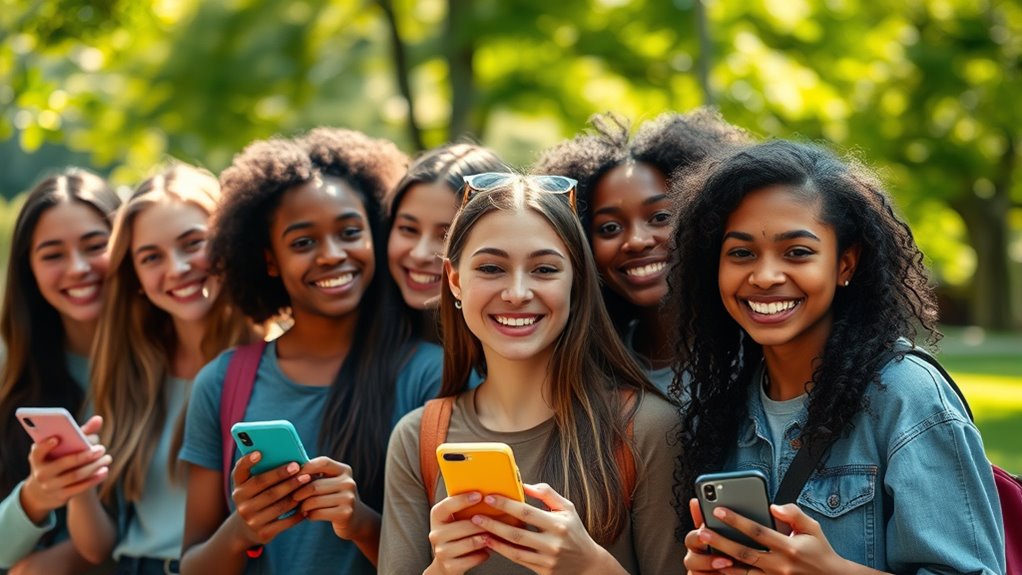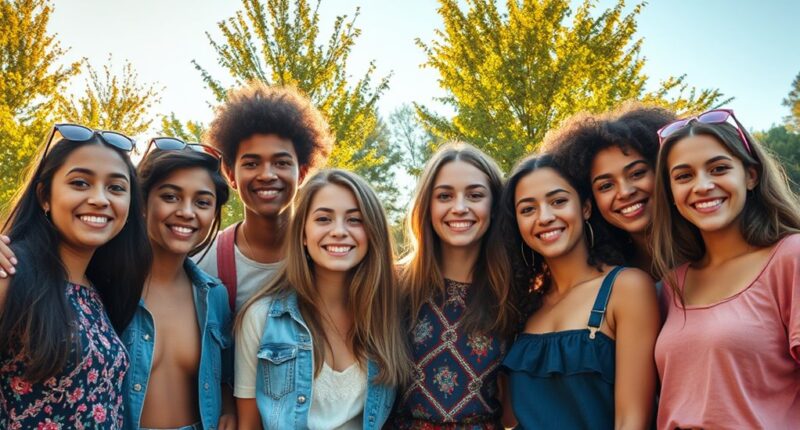In today’s digital world, you’re bombarded with images and messages about the “ideal” body, often shaped by social media and edited photos. It’s easy to compare yourself to these unrealistic standards, which can lead to dissatisfaction and low confidence. Instead, focus on celebrating your unique qualities and remember that beauty isn’t one-size-fits-all. Recognizing these influences and embracing self-acceptance can boost your confidence—if you look further, you’ll discover even more ways to build a healthy body image.
Key Takeaways
- Encourage teens to recognize and question unrealistic beauty standards often portrayed in media and social platforms.
- Promote self-acceptance by highlighting personal strengths and celebrating individual qualities beyond appearance.
- Educate teens on the curated nature of media images and the importance of viewing beauty diversity.
- Foster awareness of peer comparison’s negative effects and encourage focusing on personal growth and confidence.
- Support developing critical thinking about media messages to reduce internalization of harmful standards.

Have you ever wondered how teenagers develop their perceptions of their bodies? It’s a complex process influenced by many factors, but two major ones are media influence and peer comparison. As a teen, you’re constantly bombarded with images and messages that suggest what the “ideal” body looks like. Social media platforms, magazines, and TV shows often showcase edited, perfect images that can make you feel like your own body falls short. When you see these curated versions of beauty, it’s easy to start comparing yourself to them. You might notice your classmates or friends who seem to fit these ideals more closely, leading to feelings of inadequacy or dissatisfaction with your own body. This peer comparison can be powerful because it’s rooted in real interactions and social feedback, making it feel more immediate and personal. You might find yourself thinking, “Why don’t I look like that?” or “Everyone else seems to have it together,” which can chip away at your confidence over time.
Media influence shapes your perceptions by constantly presenting a narrow standard of beauty—often slim, tall, and flawless skin—making it seem as if those traits are the only way to be attractive or accepted. When you internalize these images, you may start to judge yourself harshly, focusing on what you perceive as flaws or imperfections. The problem is that many of these images are heavily edited or idealized, creating a distorted view of reality. It’s easy to forget that what you see online isn’t always real or attainable, which makes comparing yourself to those images unfair and unhelpful. Instead of recognizing the diversity of real bodies, you might start believing that your worth is tied to how closely you match these unrealistic standards.
To combat this, it’s important to develop awareness of how media and peer comparison influence your thoughts. Remind yourself that everyone’s body is different and that beauty isn’t one-size-fits-all. Focus on the qualities you like about yourself and celebrate your individuality. Remember that social media often shows only the highlight reel of someone’s life, not the full picture. Building confidence means accepting yourself as you are, understanding that your value isn’t determined by appearances or how you measure up to others. Recognizing the power of self-acceptance can help you cultivate a healthier body image and boost your confidence in a world filled with unrealistic standards.
Frequently Asked Questions
How Can Parents Effectively Discuss Body Image With Teens?
To discuss body image effectively, you should focus on teaching media literacy, helping your teen recognize unrealistic portrayals and cultural pressures. Encourage open conversations where they feel safe sharing their feelings. Promote self-compassion by emphasizing their unique qualities and worth beyond appearance. By actively listening and validating their experiences, you help your teen build confidence, resist harmful comparisons, and develop a healthier, more positive self-image in today’s filtered world.
What Are Signs of Body Image Issues in Teens?
Think of your teen’s mind as a garden, vulnerable to weeds like body image issues. Signs include excessive media literacy struggles, where they fixate on perfect images, or succumb to peer pressure, leading to secrecy about eating habits or appearance concerns. They might withdraw, obsess over weight, or criticize themselves constantly. Recognizing these signs helps you step in early, nurturing a healthier self-image amidst a world of filters and unrealistic standards.
How Does Social Media Influence Teen Self-Esteem?
You might notice that social media influences your self-esteem through digital comparison and selfie culture. When you compare yourself to curated images or seek validation with selfies, it can lower your confidence. The constant exposure to idealized images makes you feel inadequate or pressured to look a certain way. Recognizing these influences helps you build a healthier self-image, reminding you that real beauty isn’t about perfection but authenticity and self-acceptance.
Are There Specific Activities That Boost Teen Confidence?
Imagine building a sturdy bridge over a river. Practical confidence boosters, like setting small goals and celebrating wins, act as the planks strengthening your bridge. Engaging in activities like sports, arts, or volunteering, and seeking peer support, help you cross confidently. These actions boost your self-esteem by making you feel capable and supported, much like a well-constructed bridge that safely carries you across challenges.
How Can Schools Support Positive Body Image Among Students?
You can support positive body image among students by fostering media literacy, helping them critically analyze images and messages they see daily. Encourage open conversations about self-esteem and challenge unrealistic beauty standards. Promote peer support programs where students uplift each other, creating a safe environment. By combining media literacy with strong peer connections, you help students develop confidence and resilience in a world filled with filters and societal pressures.
Conclusion
Remember, over 70% of teens report feeling worse about their bodies due to social media filters. But you can choose confidence over comparison. Embrace your unique features, and focus on how you feel, not just how you look online. By celebrating authenticity, you help break the cycle of unrealistic standards. When you promote self-love, you inspire others to do the same, creating a more genuine and supportive world—one filter-free moment at a time.









